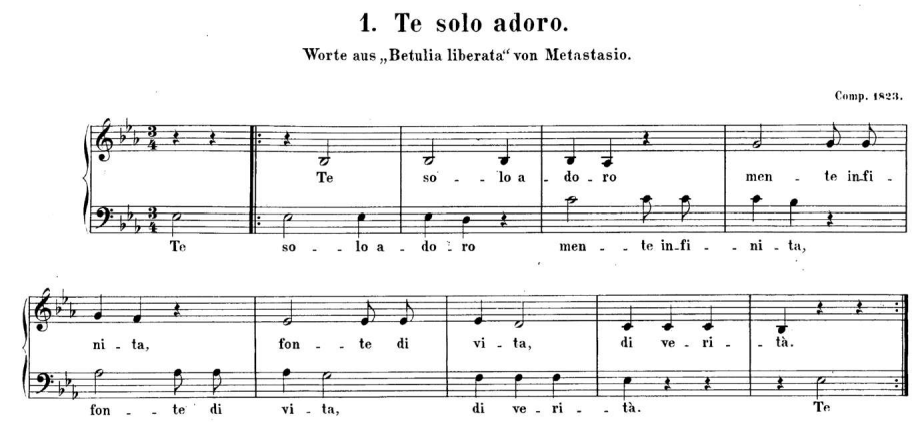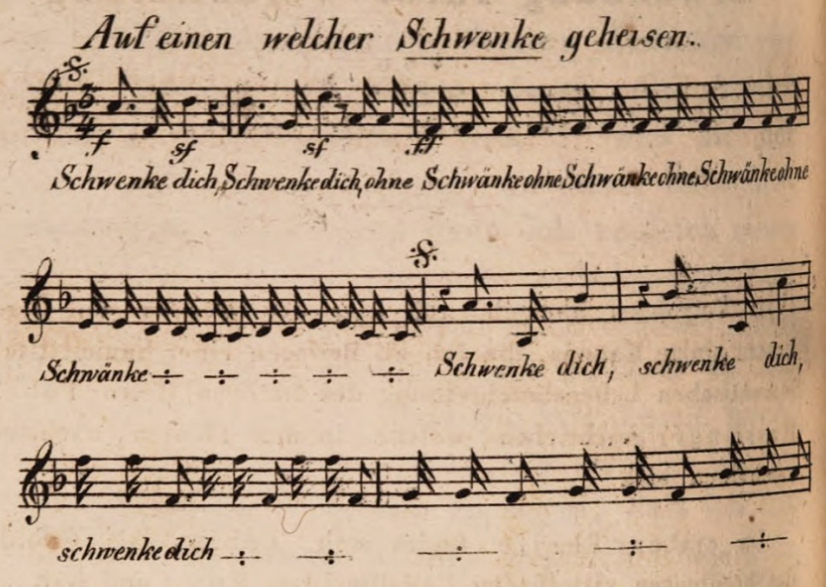Carlo Soliva was born in Italy into a family of Swiss chocolatiers, so of course he became an opera composer and conductor who travelled and lived in several places in Europe. In 1821, he dedicated his Grand Trio for Piano, Harp, and Viola to Beethoven.
In a letter, Beethoven wrote a canon for Carlo Soliva with a dedication in Italian: “Canon in two voices, written 2 June 1824 for Signor Soliva as a souvenir from his friend, Luigi van Beethoven.” (Beethoven Letters No. 1297)

The symbol in the score above the word “solo” shows where the second voice comes in. However, because the first measure begins with an implicit quarter-note rest, that rest aligns with the first syllable of “solo.” Here’s the posthumous publication by Breitkopf & Härtel:

The text is from Metastasio’s libretto La Betulia liberata (The Liberation of Bethulia) and translates as “I alone love you, infinite spirit, source of life and truth.”
Fun fact: This is the only text set to music by both Mozart and Beethoven.
#Beethoven250 Day 338
Canon “Te solo adoro” (WoO 186), 1824
A studio recording of this short lovely canon.
Beethoven seems to have written the WoO 187 canon “Schwenke dich” specifically for the magazine Cäcilia. It was published along the WoO 180 canon “Hoffmann, sei ja ein Hofmann” (Day 317). The whole issue is available on the Hathitrust site.

The text is “Schwenke dich ohne Schwänke,” a play on words alluding to the composer and pianist Carl Schwencke. The word “Schwenke” means “spin” while “Schwänke” means “sway” or “stagger.” An English equivalent might be “Spin around without stumbling.”
The dal segno symbols above the staff indicate how multiple voices of the music are to line up to form a canon. In addition, the symbols that looks like a division sign indicate a repeated word, which creates an interesting effect when the canon is performed.
#Beethoven250 Day 338
Canon “Schwenke dich” (WoO 187), 1824
A studio recording with animated score. The repeated syllables evoke an image of children spinning around until they’re dizzy.